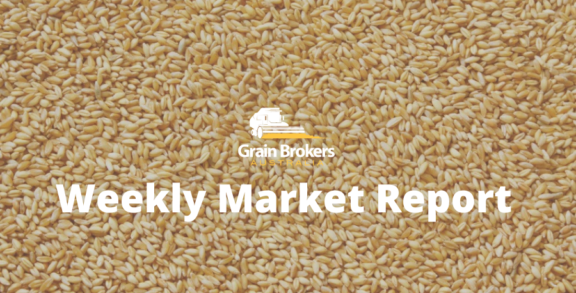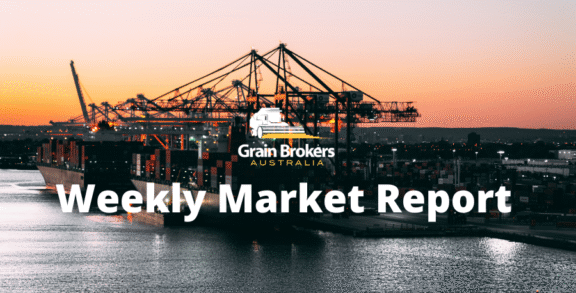
The big wheat news and market influence last week revolved around the Algerian milling wheat tender, with the lead-up to the result loaded with a multitude of questions and theories around price, volume and who would be successful. Will Russian exporters observe the floor price, or could they toe the line on the floor price but discount freight to be competitive? How will French exporters respond after reportedly being excluded for the second successive tender? Who will fill the sizeable demand void if neither origin is in the race?
In the end, Algeria’s state grains agency, Office Algérien Interprofessionnel des Céréales (OAIC), is reported to have booked as much as 600,000 metric tonne of wheat in the optional origin international tender for shipment in two periods: December 1-15 and December 16-31. This was at the top end of expectations, which ranged upward from 480,000 metric tonne, and sees OAIC well ahead of its historical average purchasing pace for first four months of the marketing year.
The final price is believed to be around US$263 per metric tonne, including cost and freight (CFR). This is fractionally higher than the US$262.50/MT CFR paid for as much as 570,000MT in an early October purchase. The lowest offer when tender submissions closed was claimed to be US$267/MT CFR. A counter bid from OAIC was reportedly presented, with the business concluded from six separate trade houses at a maximum of US$263/MT CFR.
Talk in the market late last week suggested that successful participants planned to cover most of their sale commitments via Black Sea ports, with Bulgaria, Romania, and Ukraine expected to see the lion’s share. The Baltic States are reportedly in the game, and even Argentinian wheat is coming into play as its harvest approaches and local prices continue to fall in search of export demand. Offers from tender participants most likely to be shipping through Russian ports were around US$9/MT CFR higher than the final price, suggesting the floor was observed.
While French companies were completely excluded in the October 8 tender, European traders reported that participation in last week’s transaction was acceptable, as long as they refrained from offering French origin wheat. France has traditionally been Algeria’s largest wheat supplier, but Russia has assumed that mantle in the past two years as the volume of Black Sea grain flowing into Algeria’s massive import market continues to rise. Russia has been aggressively expanding its grain presence in the Algerian market since OAIC adopted a policy of diversification for its commercial partners prior to the 2021/22 export season.
The exclusion move echoes a similar dispute around three years ago and is an apparent fallout from renewed diplomatic tensions between the two governments. President Macron recently voiced his support for Morocco’s plan for Western Sahara to become an autonomous region under Moroccan control. Morocco has long claimed sovereignty over Western Sahara, a coastal territory in North Africa formerly controlled by Spain. But Algeria backs the Polisario Front, a group that has fought for the self-determination of the disputed territory for decades.
Algeria is a leading consumer of wheat in Africa. Baguettes and flatbreads are daily diet staples, while couscous is traditionally consumed at least once a week, usually on Fridays. The Algerian government subsidizes bread production, rendering wheat and bread consumption relatively inelastic and somewhat divorced from economic shocks, whether sluggish growth or rampant food inflation.
However, being largely rainfed, wheat production in Algeria is extremely variable, traditionally contributing between 20 and 30 per cent of total domestic demand. The 2024/25 harvest yielded 3.0 million metric tonne off 2.08 million hectares at an average of 1.4 metric tonne per hectare. This was up from 2.7MT of a similar area in 2023/24 for an average of 1.3MT/ha.
Algerian farmers commenced planting new crop wheat early last month following relatively good early season rainfall and reasonable soil moisture reserves. The Government of Algeria has provided seed and fertilizer for cereal cultivation at no cost to farmers.
According to the Minister of Agriculture, Youcef Chorfa, 3.07 million hectares will be devoted to cereal production for the 2025/26 harvest. Around 1.6Mha will be allocated to durum wheat, representing 52 per cent of the total area, and 1.0Mha will be assigned to barley, representing 32.5 per cent. Collectively, durum and barley represent almost 85 per cent of the planted cereal area, with the remaining fields devoted to bread wheat and oats.
Algeria is one of the world’s biggest wheat buyers each year, with the local office of the USDA’s Foreign Agricultural Service pegging imports in 2024/25 at 9MMT. That would place the nation fifth on the volume list behind Egypt, Indonesia, China and the European Union, and just ahead of its western neighbour Morocco. However, it is down from a drought induced wheat import record of 9.5MMT in the 2023/24 marketing year.
Bread wheat typically accounts for 75 to 80 per cent of total wheat imports, while durum purchases are much lower at 20 to 25 per cent of the program. In his inauguration speech in September, President Tebboune reiterated the government’s commitment to achieving self-sufficiency in durum wheat production by the end of 2025. However, import data suggests otherwise, with durum wheat imports actually increasing rather than decreasing in recent years.
While the European Union as a whole was the biggest wheat supplier to Algeria in the 2023/24 marketing year with around 3.94MMT, French contributions to that program continue to fall. A significant proportion of the EU task was shipped via Romania and Bulgaria’s Black Sea ports of Constanza, Varna and Burgas. Germany, Poland and the Baltic States were also suppliers.
At 2.3MMT, Russia was the biggest single sovereign state supplier in 2023/24, and current forecasts have a similar number pencilled into the 2024/25 grids. Canada and Mexico were also significant suppliers at 0.88MMT and 0.67MMT, respectively. Ukraine saw sales increase substantially year-on-year to 0.55MMT, durum wheat imports from Turkey jumped noticeably to 0.49MMT and shipments of durum wheat from Australia were 0.17MMT last season.
Call your local Grain Brokers Australia representative on 1300 946 544 to discuss your grain marketing needs.
Written by Peter McMeekin.




